Kiting is the ability of some birds to maintain a stable position in the air by using air currents rather than by the flapping of wings or hovering. Last week I had a wonderful opportunity with this young Rough-legged Hawk while it was kiting in the stiff wind rising up from the Antelope Island causeway. The light was good and the bird was cooperative and let me get close – what more could a bird photographer wish for?
1/1000, f/8, ISO 500, 500 f/4, 1.4 tc
It was amazing to see how still in the air this bird could be – often maintaining the same relative position to the ground without significant wing movement for long periods. I swear that if I had been using a tripod I could have focused on the bird, walked away for 10 seconds or so and then returned and snapped the shutter with the hawk still in the frame and without having had to look through the viewfinder or refocus. A bit of a stretch perhaps, but not by a lot.
1/2500, f/6.3, ISO 500, 500 f/4, 1.4 tc
Much of the time the hawk was hunting – looking down into the grasses for voles. That head position doesn’t provide the eye contact that is photographically desirable but I wanted to include a shot that illustrated hunting posture.
1/1600, f/6.3, ISO 500, 500 f/4, 1.4 tc
The hawk caught several voles while I was photographing it. In this instance the bird immediately took to the air with the very young vole…
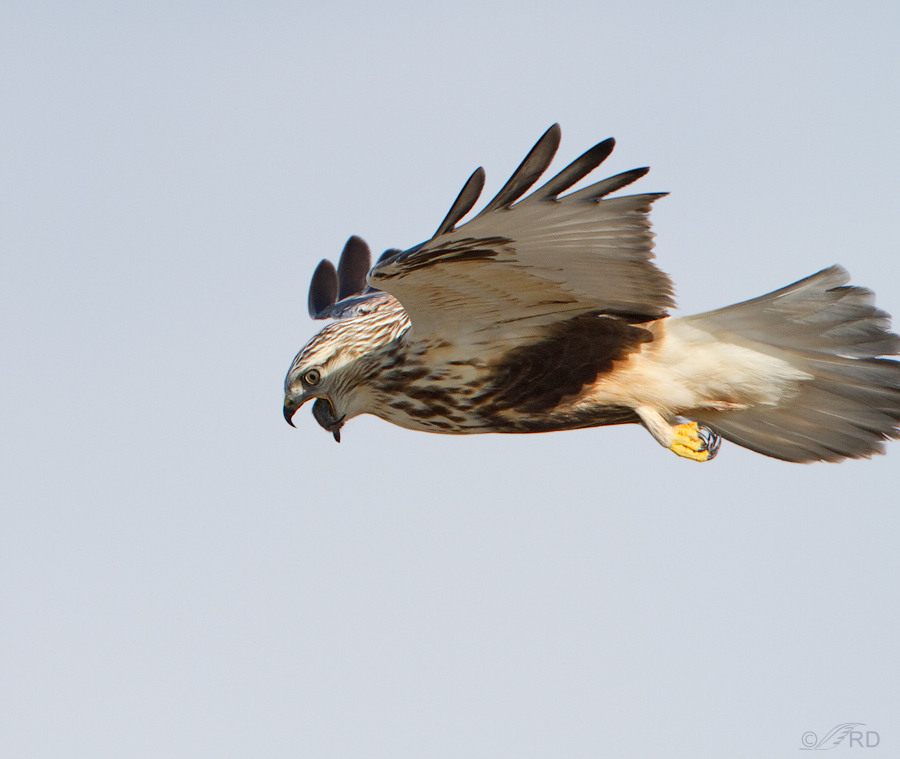 1/2000, f/6.3, ISO 500, 500 f/4, 1.4 tc
1/2000, f/6.3, ISO 500, 500 f/4, 1.4 tc
And swallowed it whole while airborne. I clipped the tail and there’s shadow on the face but I thought I’d include the shot anyway to show the behavior.
1/3200, f/6.3, ISO 500, 500 f/4, 1.4 tc
Other times the hawk would consume the vole in pieces while still on the ground.
1/2000, f/6.3, ISO 500, 500 f/4, 1.4 tc
Most of the shots I got that day had blue skies or white clouds as background. I made an effort to try to get the horizon or water in the background but most of those images didn’t turn out. This is one of the few I got with the Great Salt Lake as background, taken as the bird was rising after having eaten a vole.
1/1600, f/6.3, ISO 500, 500 f/4, 1.4 tc
And this image shows the horizon in the background.
1/2500, f/6.3, ISO 500, 500 f/4, 1.4 tc
I liked this shot due to the good eye contact and because the bird was turned slightly in my direction.
1/1000, f/8, ISO 500, 500 f/4, 1.4 tc
Occasionally this hawk would see something of interest on the other side of the causeway and raise its head, apparently to get a better look over the road. Doing so often forced its body into this unusual posture that I find appealing. My friend Mia calls this the “chicken necked” pose.
1/1250, f/8, ISO 500, 500 f/4, 1.4 tc
Looking over the causeway once again.
Until this day the majority of my photos of kiting buteos were taken from very far away – much too far for good image quality so I was quite delighted to find this cooperative subject.
Ron


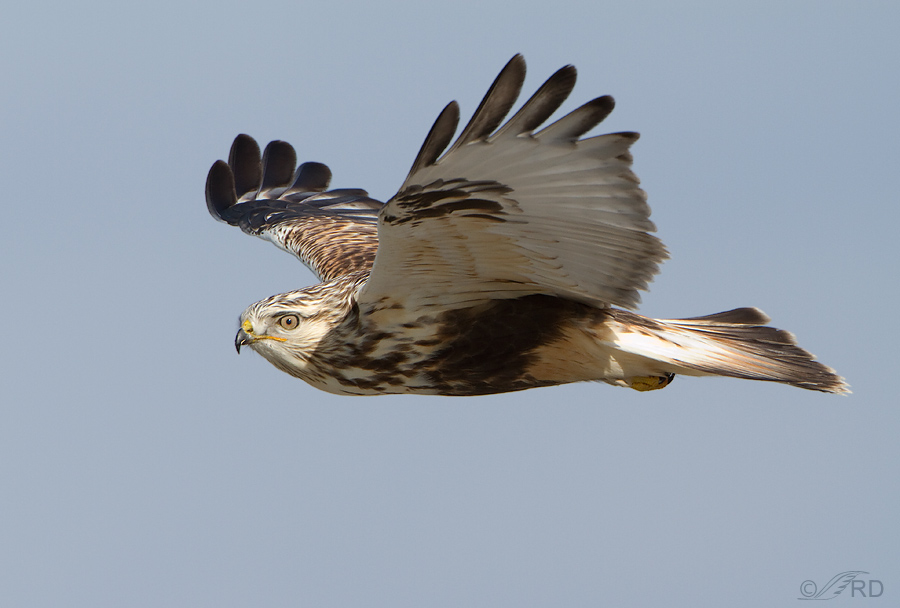

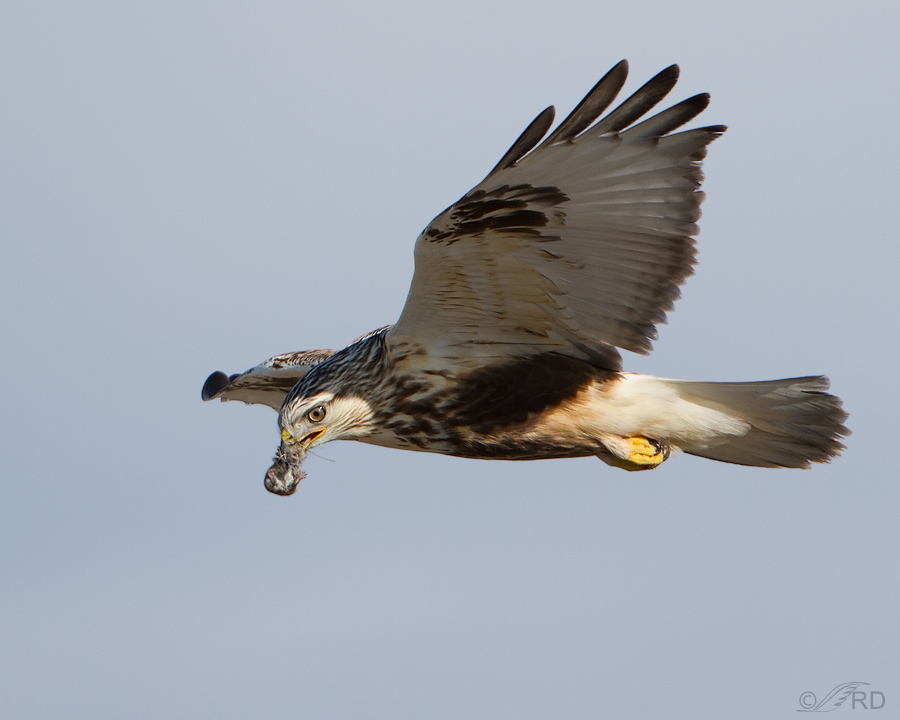
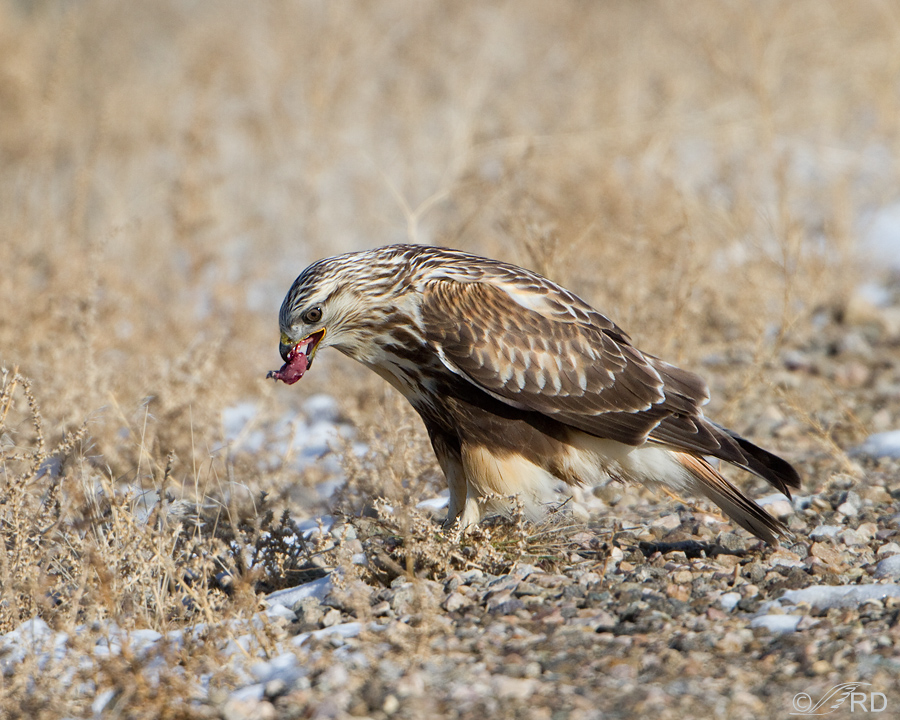
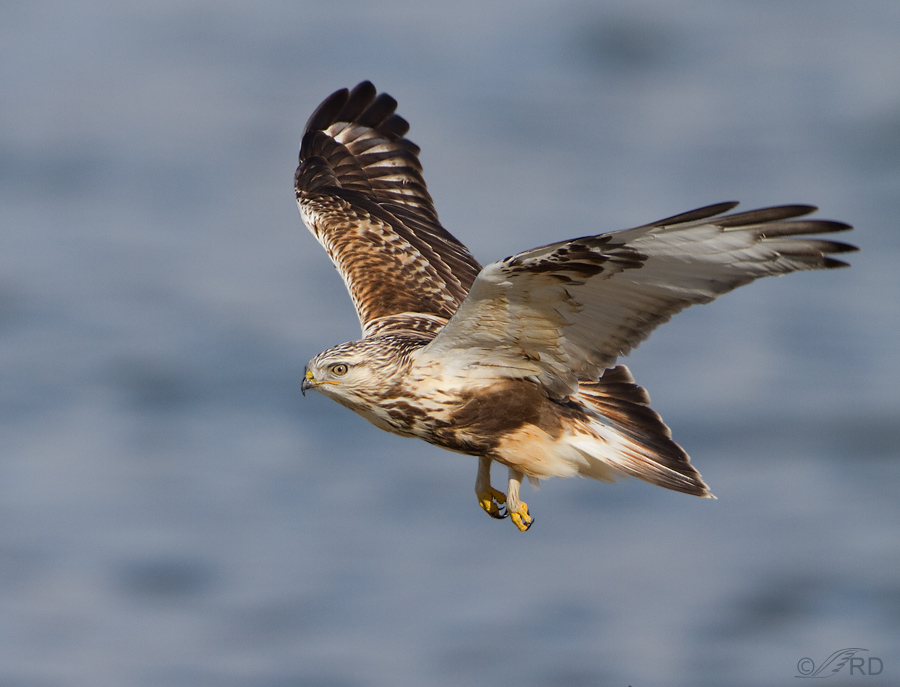
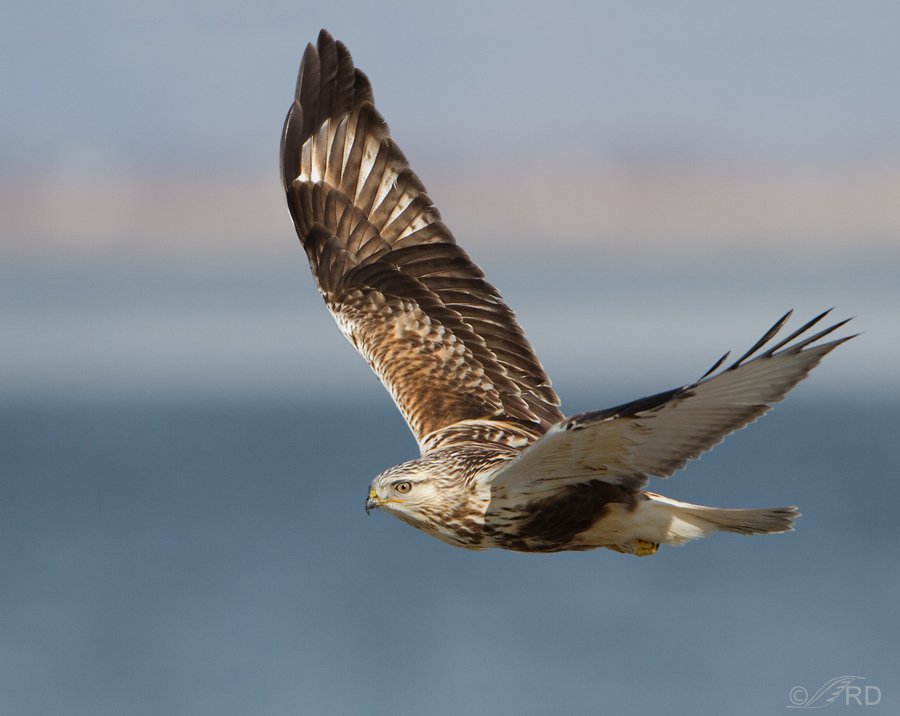
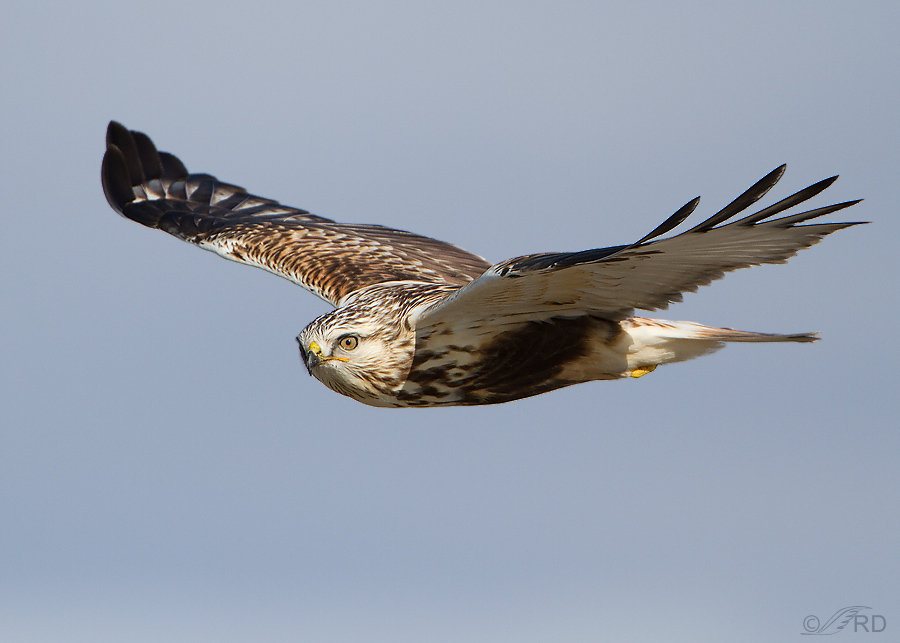
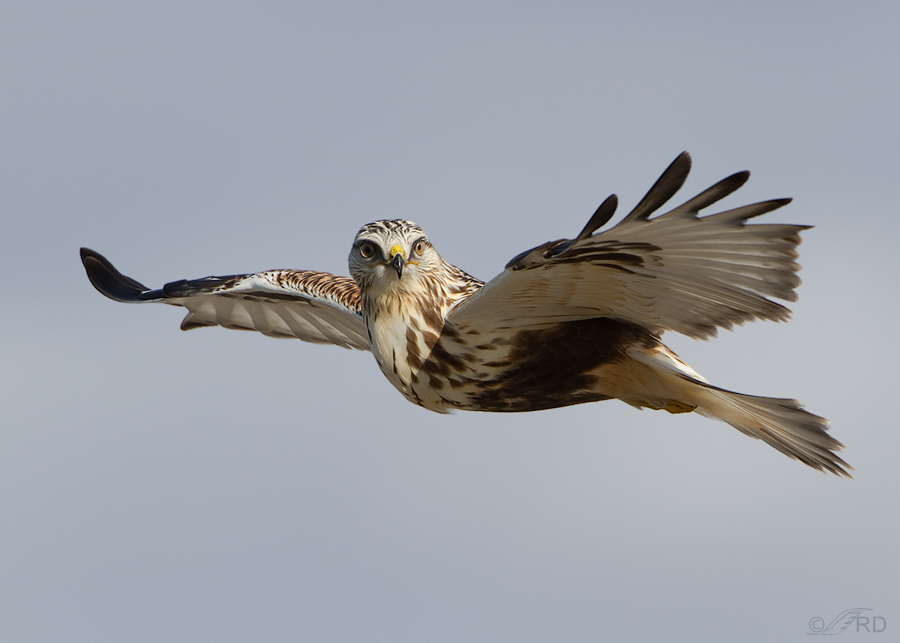
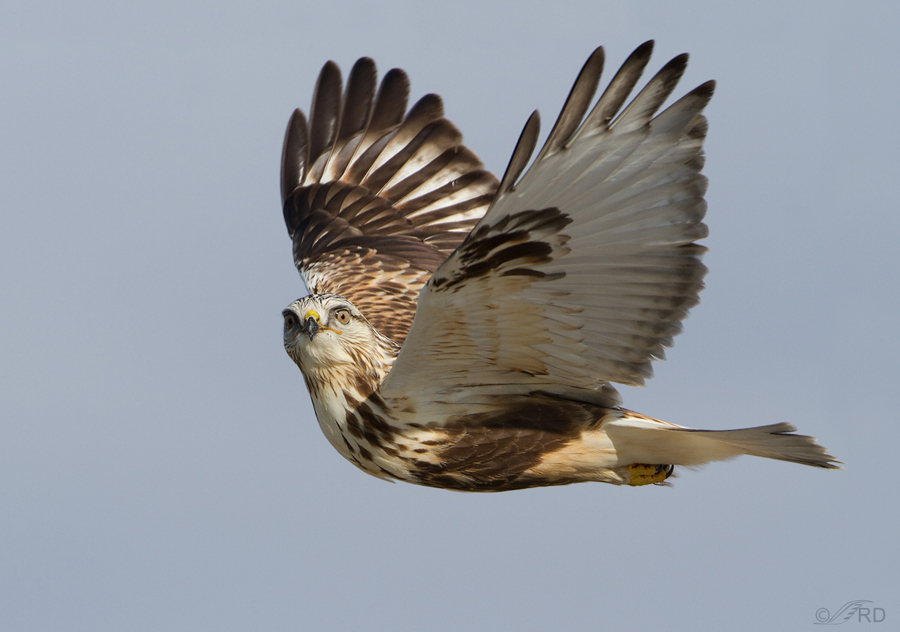
Another excellent series and what a wonderful opportunity to photograph this. Well done.
Mike, I shoot in apterture priority so yes, I do “bounce around” a bit. I have EV settings for common situations (for me) memorized (examples – magpies +1/3, female harriers +1/3, male harriers 0.0, all when against a relatively neutral background then adjust for the background when I have to). Birds in flight are tough with quickly changing backgrounds but I can usually get it close, then adjust in ACR when processing – one of the many reasons for shooting in RAW. Don’t get me wrong though, I blow the exposure on my share of shots, for sure. With practice though (lots of it) I’ve improved significantly.
With these roughie shots you mentioned I was shooting her in flight with bright white clouds changing to blue sky as she flew – a tough situation to start with. Then she went to the darker ground to very quickly eat that vole which increased my SS to 1/3200. I had no time to make any adjustments before she flew off. Everything happens so damned fast with birds – one of the challenges of avian photography…
Hope that helps.
Hi Ron, Great series of shots! It’s interesting to follow your camera settings through the sequence. Do you pretty much know what you’re looking for with each combination of settings, or do you bounce around a lot and check shots as you go? I noticed you were at 1/3200 on the ground shot, then 1/2000 a few seconds later on takeoff. Single frame aperture priority? How do I find that “crystal clear” setting on my Canon?
Such a cooperative bird. And beautiful with it. I think the ‘chicken-necked’ pose is my favourite but they are all brilliant. Thank you.